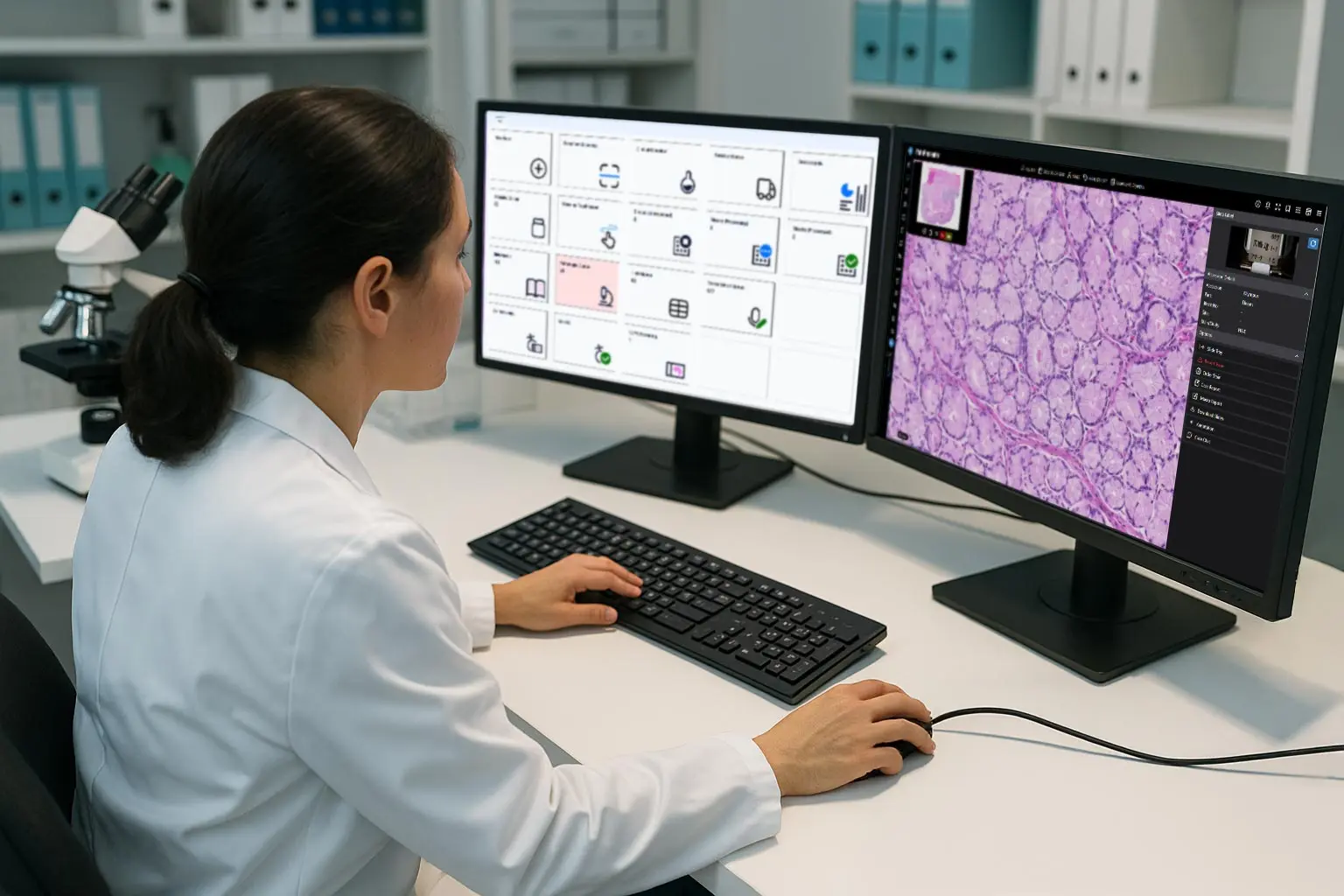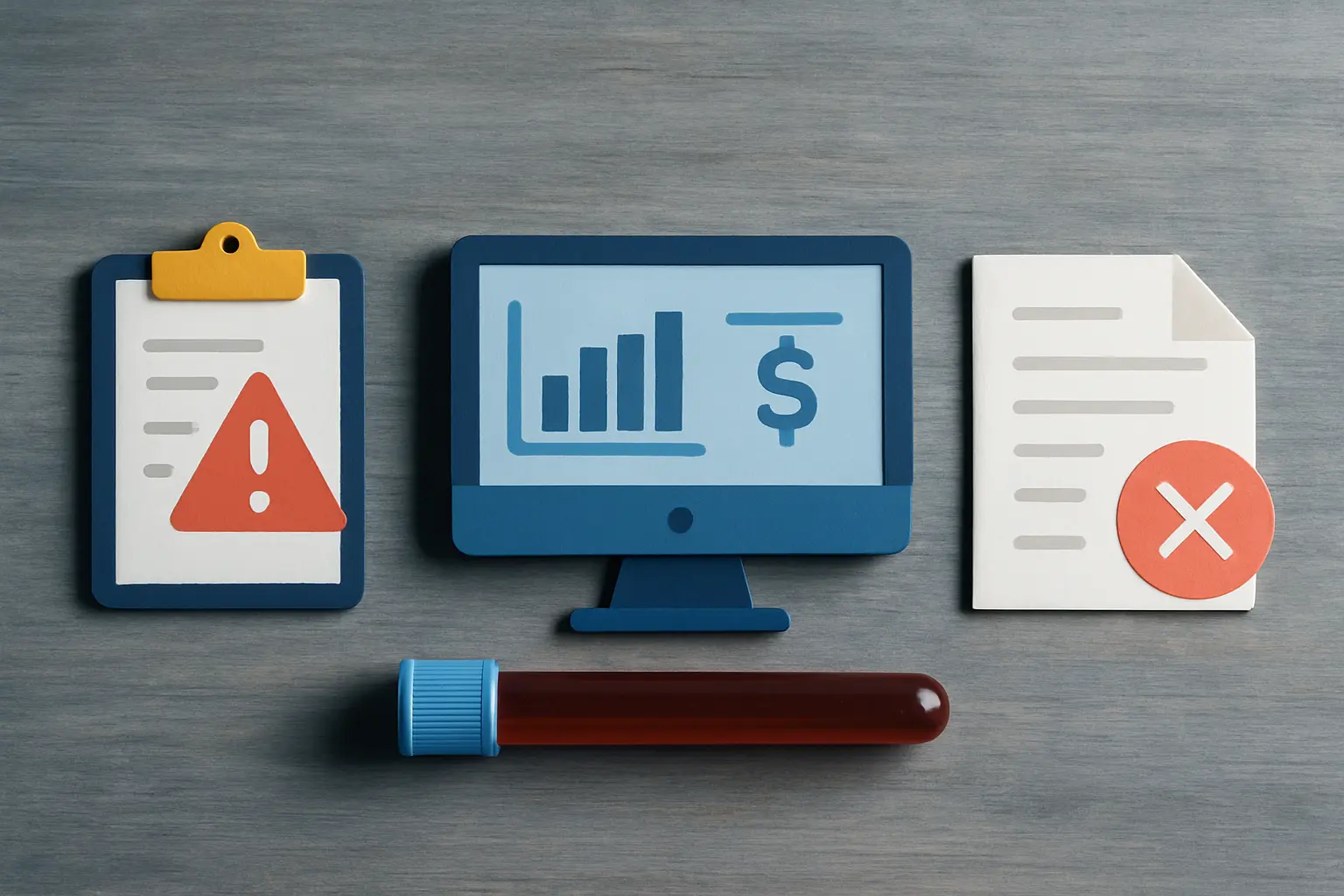Blog
Laboratory 101: Improving the Laboratory Billing Process To Prevent Common Errors
June 12, 2025
Medical laboratories generate large volumes of tests annually, so it’s no surprise they also experience some of the highest denial rates in the healthcare sector.
Years ago, armed with robust budgets and sizable margins, laboratories didn’t feel the need to invest in highly functional laboratory revenue cycle management (lab RCM) technology and often wrote off these denials, believing the effort to resubmit wasn’t worth the time and resources required to work the claims.
They weren’t overly concerned about leaving money on the table because they were profitable and believed denials were just a daily part of doing business.
Unfortunately, those days are gone, and every dollar counts. Today’s laboratories face several market pressures and challenges, forcing them to look inward and evaluate their laboratory billing systems while identifying areas where improvement needs to be a priority.
Lab billing (in-house or with an external RCM management company) has traditionally been viewed throughout the industry as a late-stage process rather than one that begins at the front end at order origination.
Case Study: Leveraging LIS System & Lab RCM Integration to Improve the Laboratory Billing Process
However, a backend lab RCM process represents a missed opportunity because the reality is that the best laboratory billing solutions begin when the order enters the laboratory, not when the report is final.
Fortunately, most lab operators now recognize the importance of proactively optimizing their lab billing workflows to safeguard against ongoing challenges, such as declining payer reimbursements, complex payer-specific requirements, staffing shortages, rapidly evolving regulations, and the growing burden of patient payment responsibility.
Learn More: The LigoLab Difference: Demonstrating the Power of Lab RCM Automation in the Clinical Laboratory
Missing patient demographics lead directly to laboratory denials. Laboratories that recognize this and take the time to implement advanced laboratory billing solutions that capture the patient’s name, address, and phone number on the front end of the RCM cycle will experience immediate improvement.
Learn More: Reduce Denials and Stop Revenue Leakage With Integrated Laboratory Billing Management

Actionable Steps To Improve the First-Pass Resolution Rate:
The First Pass Resolution Rate (FPRR) is a key performance metric that measures the percentage of claims processed and paid on the first submission without rework or resubmission.
A high percentage indicates a laboratory billing process with proper coding and claim submission, leading to fewer denials.
A lab with a First Pass Resolution Rate (FPRR) above 90 percent enjoys fewer claim denials, quicker reimbursements, and more efficient use of resources—all of which strengthen its reputation and provide a competitive edge in a market challenged by a shortage of skilled personnel.
Here is a list of upstream steps a lab billing department can take to push its FPRR to 90 percent and beyond.
- Maintain Accurate Files - Verify demographics and insurance information. Insurance carriers change often, and so do coverage limits.
- Insurance Discovery - Call the client or provider to obtain missing or incomplete patient data. This will help you find commercial and government insurance coverage that’s billable.
- Check Eligibility - Visit the payer portal (if provided) or reach the payer via phone to confirm that the patient's insurance you’ve identified is active.
- Whitepages Lookup - Check and verify the patient’s name and telephone number with this resource.
- USPS Address Validation - To check and verify the patient’s address with this resource.
- Don’t Be Late - Implement a laboratory billing process that ensures timely submissions and verifies receipt by the payer.
- Analyze Results - Take the time to learn why a claim was denied to identify and resolve negative patterns and trends.
- Stay Current - Rules and regulations are constantly changing. Take the time to educate and train lab billing staff members with updates.
- Close The Gaps - Identifying patterns and trends doesn't matter if the findings aren’t communicated effectively to front desk staffers, lab billers, and physicians. Put everyone on the same page and work from a shared playbook.
By taking these proactive steps at the beginning of the lab billing cycle, medical laboratories can generate more clean claims and see a noticeable increase in net collections.
These short-term improvements can help stabilize struggling labs, giving them the breathing room to partner with providers offering specialized lab RCM software and to implement long-term laboratory billing solutions that maximize claim collection, improve transparency, and reduce labor costs.
With the right RCM tools in place, labs can do more than just keep pace with today’s challenges—they can boost profitability, gain a competitive advantage, and confidently scale their operations to pursue new growth opportunities.
Adding Automation to Laboratory Revenue Cycle Management
It’s abundantly clear that the key to long-term laboratory success is tied to laboratory billing automation. Moreover, a recent study from CAQH, a nonprofit group that works with providers to streamline healthcare businesses, reinforced the importance of automation as part of any lab RCM solution.
Learn More: How Billing and Coding Automation Increases Laboratory Revenue
CAQH identified eight common administrative tasks that collectively cost the healthcare industry $13.3 billion each year. The organization then calculated the cost per transaction for each task, factoring in transaction volume along with the time and manual labor required to complete them.
Average Cost Per Administrative Task When Performed Manually
1. Claim status inquiry: $10.13
2. Prior authorization: $14.24
3. Eligibility and benefit verification: $8.77
4. Attachments: $5.06
5. Claim submission: $4.22
6. Remittance advice: $4.22
7. Claim payment: $3.18
8. Coordination of benefits: $1.05
Modern Laboratory Billing Solutions Cut Costs and Increase Margins
Manual administrative tasks can rapidly drain resources, cutting into a laboratory’s profitability and hindering overall efficiency.
The good news? For forward-thinking lab operators, this represents a prime opportunity to reduce overhead, boost margins, and transform lab revenue cycle management into a true profit driver.
Integrated Medical LIS & Lab RCM Platforms Drive Operational and Financial Excellence
LigoLab is an all-in-one laboratory informatics platform that seamlessly integrates laboratory information system (LIS) software and lab revenue cycle management (lab RCM) functionality. Designed for clinical, pathology, and molecular laboratories, LigoLab automates and streamlines every step of the diagnostic and lab billing process.
Its advanced laboratory billing solutions feature real-time eligibility checks, automated coding, claim validation, and error scrubbing, ensuring clean claims and faster reimbursements.
With built-in compliance tools, full transparency, and end-to-end workflow automation, LigoLab empowers labs to boost efficiency, reduce administrative costs, and scale with confidence.
Ready to eliminate manual bottlenecks and maximize your lab's revenue potential?Connect with a LigoLab RCM expert today and see what’s possible.






